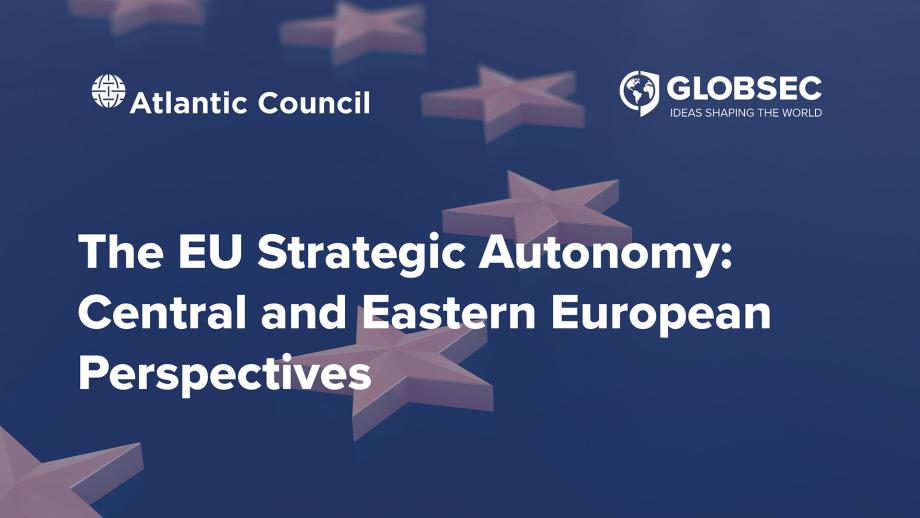The EU Strategic Autonomy: Central and Eastern European Perspectives

Even before COVID hit, Europeans had already initiated discussions on how to optimally approach “strategic autonomy” — a vision for Europe in the world that is to enable the continent to decide its own future without overly depending on others. This freedom to act was not merely conceived of in reactive and defensive terms. It would additionally give the bloc the ability to engage and cooperate with its preferred actors. Academic research has shown that EU member states agree in principle to the notion of an interest-driven Union capable of defending its economic and political interest abroad.
While a fair bit has been written about what ‘old’ or ‘Western’ member states think about strategic autonomy. Little ink has been spilt, however, on the perspectives of Central and Eastern Europe (CEE).
The Atlantic Council and GLOBSEC’s new report explores ongoing debates about strategic autonomy transpiring in CEE in a number of fields, including defence, trade, and digital. Furthermore, it looks to ground EU foreign policy ambitions in shaping a “stronger West” as a response to an intensifying confrontation between China and the United States. The report, which is a joint endeavour of the Atlantic Council and GLOBSEC, brings together contributions from nine distinguished practitioners, experts, and policymakers from the region.
Here are a few of the top-line takeaways from this exercise.
First, Central and Eastern Europe are neither ignorant nor indifferent to geopolitics. The challenges faced by CEE largely map onto those faced by the broader EU - but in a microcosm. While it is understood that strategic autonomy’s success will depend on Europe securing a wide and diverse range of partnerships, its pursuance must at the same time not weaken the transatlantic bond. Any discussions that call into question the role of NATO and the United States in the region make CEE countries apprehensive.
Second, CEE recognizes that the concept of strategic autonomy is evolving. While calling for European economic autonomy must not be taken to autarkic extremes, adoption of a strategic approach could potentially increase Europe’s economic power, both by developing new production and know-how capacities and, perhaps more importantly, by enhancing its role in the globalized economy so that it can render its trade and investment ties more predictable and enforceable.
Third, CEE is taking a cautious approach towards defining the degree of strategic autonomy it envisions to be ideal and feasible without entirely opposing the concept. To put it simply, strategic autonomy is not an impossible lift, but before things get off the ground, some fundamental questions need to be answered. What is clear, at least for now, is that complete autonomy will make Central Europeans nervous; if “full” becomes the goal, debate in Brussels will be tense and progress slow.
Finally, CEE doesn’t buy central planning. The region has rather learned from the past that slogans, five-year plans, and development directed from above are no way to catch up or lead the way. Europe needs to restore its old recipes of success. This includes an openness to ideas from abroad and a willingness to experiment with different concepts in different regions and learn from what works. It is understood in the region that properly articulated strategic autonomy holds tremendous promise. But to be realized, the EU must first clarify the types of standards and capabilities it needs and its readiness to use them.
Time will tell whether the European ambition of strategic autonomy was a pipe dream or the stirrings of the third giant on the global stage.


